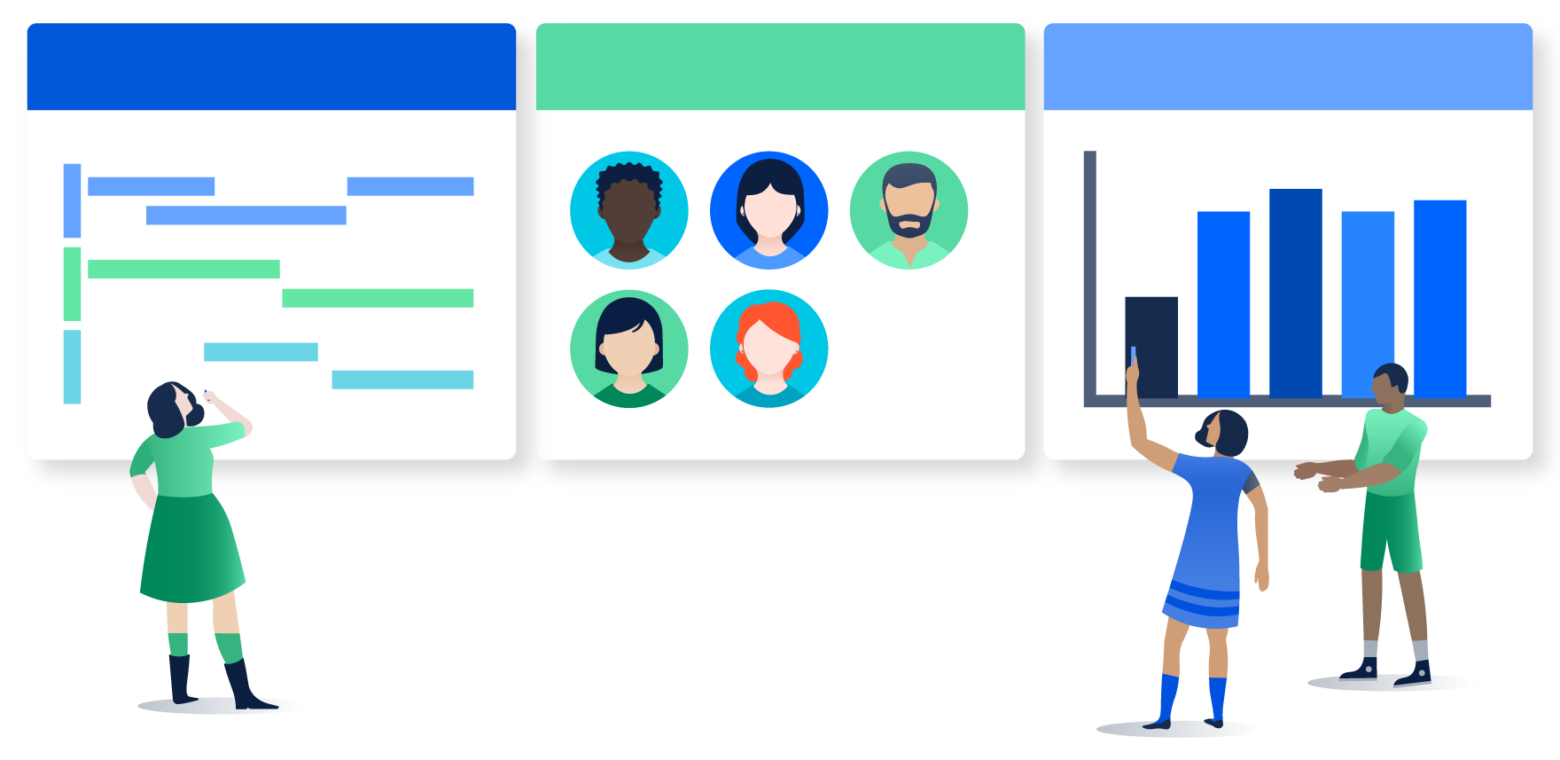Confluence and Jira Software are like bacon and eggs, Simon and Garfunkel, wine and cheese.Separately, they’re good. Together, they’re real good. In fact, over half of Jira Software teams already use Confluence as a complement to Jira and their agile development toolset. Check out our video to see why:
There are many good reasons to use Confluence and Jira Software together, but here are the top five:
1. A single place for all your documentation
Tons of work goes into a software project – product requirements, project plans, technical documentation, design specs, sprint meeting notes… the list is almost endless. While Jira is great at helping your team plan and track all the work that goes into your software, Confluence gives you a single place to organize all of this additional content that’s created along the way.
Confluence eliminates the need to store documentation in multiple places like shared drives or file folders.You can link a Jira project to a related Confluence space where all relevant documentation can be easily organized. No more searching for content related to the project, it’s all in the same space whenever you need it.
Each space has a hierarchy of content that that lets you organize your content so it’s easy to find, plus spaces are accessible to anyone on the team. That means your team always knows exactly where to look when they need something. With everything in one place, and up-to-date, your new team members can get up and running quickly.
2. Break down communication barriers
When developing software, finding consensus isn’t always easy. Especially when it comes to technical decisions or product requirements. With numerous stakeholders involved, maintaining speed, transparency, and quality becomes increasingly difficult. This difficulty is magnified when team members get sucked into debating issues via email or chat apps where valuable information gets buried and context is lost.
Confluence keeps your team on the same page – literally! With the ready-to-go requirements template, you can collaborate on requirements with your team in real-time and discuss details with stakeholders using inline comments.When you’ve all agreed on the final requirements, it’s only one click to convert them into Jira issues, without even having to leave your page – as shown in the video above.
Instead of collaborating on design mockups in one place, development tasks in another, and user stories in something else, you can bring all of this work into Confluence.
3. Keeps you (and your process) moving forward
While Jira ensures your team has standardized workflows to keep your team and processes running smoothly, Confluence helps keep your team aligned along the way.
Most agile teams go through four main stages when developing software. Here’s how you can use integrations between Jira and Confluence to make the transition between them seamless.
- Define – Standardize product requirements in Confluence, and track and manage the changes as they evolve over time.
- Plan – Turn requirements into Jira stories with a single click to jumpstart development, while maintaining traceability back to your requirements.
- Release – Make and document technical decisions in Confluence, then publish automated release notes and change logs that reflect releases in Jira.
- Improve – Reflect on and improve your process by running retrospectives using a Confluence template as you complete sprints.
In each step you have traceability across your work and proper documentation when you need it.
4. Reduce time-wasting context switching
Confluence helps keep your team productive. Confluence automatically embeds newly created Jira issues in your related requirements documents, so it’s easy for your product managers to keep up on the progress of the development team’s work being tracked in Jira.
Conversely, your requirements, and any other Confluence pages, are automatically linked to your epics and issues in Jira Software, so developers can get all the context they need without breaking their flow. You can even create and access Confluence pages directly from your sprint backlog and view them inline via “Pages” in the Jira sidebar.
No matter which tool you live in, you have the context of what you’re working on, and full traceability. That means fewer headaches keeping track of everything, and greater efficiency for your team, day in and day out.
5. Provide visibility into your software projects
No one wants to spend their time constantly reporting out the status of their software project. Our Jira Reports template makes it easy for development teams to create ad-hoc reports in Confluence that detail their latest releases tracked in Jira. You can create a dynamic status report that shows the progress of the current release, or a static change log that displays what’s changed between your latest releases.
You can also easily link any Jira issue or project to a Confluence page by pasting a Jira issue link on a page or typing /Jira to quickly search for any project or issue. These customizable reports and automatic issue updates give stakeholders a snapshot of your development team’s progress, with just a few clicks. With improved visibility across all stakeholders, your team can focus more on the task at hand and ship faster.
These customizable reports give stakeholders a snapshot of your development team’s progress, with just a few clicks.
Together, Jira and Confluence offer one powerful, seamlessly integrated solution for your next software project. Together, they can help your development teams work faster, communicate more effectively, and keep documentation organized and easily accessible – with minimal effort.
